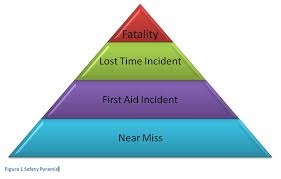Information
-
Conducted on
-
Location
WEEKLY ACCIDENT REVIEW
-
The week of September 9, 2013 Southland Industries reported one new injury. The injury happened in the Southwest Division.
A plumbing foreman at the SLS project in Las Vegas, suffered a bite to his index finger. The foreman was working in a poorly lighted area. He cut an opening in an existing wall, put his hand in to clear debris and something bit his finger. He was seen by a physician and released to work. This is a recordable, no lost time injury. The foreman was wearing gloves. Properly lighting the work area may have prevented the injury. Be sure to use task lighting. Proper illumination of your work area ensures that you can see your work, helps you to avoid any hazards and may frighten bugs and critters!!!!
WEEKLY TOPIC
-
Illumination
Good illumination is important to maximize production and maintain quality control. Poor lighting on the job-site will lead to personal injury accidents -- tripping, falling and injuries from tools and equipment.
OSHA requires that all construction areas, including stairs, ramps, corridors, storage areas, shops, offices, etc. be lighted by natural or artificial illumination. Table D-3 in OSHA standard 1926.56 indicates the intensities required for specific areas. For general construction areas illumination must be equal to 5 foot candles; a foot candle being a standard unit for measuring intensity of illumination. Generally speaking, if you are able to read drawings and follow layout marks without difficulty and use cutting tools effectively and with ease, there is sufficient lighting on the site. Plant and shop areas, first aid stations and offices require higher intensities of illumination.
All temporary wiring and lighting on the site must comply with same codes as permanent wiring. Undersized wiring or overloaded circuits lead to work stoppages, electrical shocks and even fires. Be sure wiring is protected from damage in high traffic areas.
Flexible cords used for temporary or portable lights must be designed for hard or extra-hard usage, all lamps for general illumination must be protected from accidental contact or breakage; metal case sockets must be grounded, and temporary lights must not be suspended by their cords unless specifically designed for this means of suspension.
120-volt, portable lighting may be used in wet or other conductive locations such as vessels, drums and tanks but only if protected by a ground fault circuit interrupter, otherwise the maximum permitted is 12 volts or less.
TEMPORARY WIRING MUST BE REMOVED IMMEDIATELY UPON COMPLETION OF CONSTRUCTION. FOR MORE INFORMATION ON WIRING AND ILLUMINATION SEE OSHA STANDARD 1926.405
OPPORTUNITY FOR IMPROVEMENT
-
Opportunities for improvement are ALWAYS welcome! Use the Opportunity for Improvement template on iAuditor to submit.
JOBSITE SAFETY CHECKLIST
-
Select date
-
Job Name:
-
Job Number:
-
Checked By:
-
Signature:
1. RECORDKEEPING
-
a. Notices, Posters (5-in1, OSHA Notice, Payroll)
-
b. Emergency Contacts
-
c. OSHA 300 Log
2. PERSONAL PROTECTIVE EQUIPMENT
-
a. In use: Safety glasses, Hard hats, Work boots, Gloves
-
b. Face shields or goggles used for overhead work
-
c. Respirators available
-
d. Welding screens
3. FIRST AID KITS
-
a. Available in gang box and job site trailer
-
b. Stocked adequately with gloves, bandages, and antiseptics
-
c. CPR and First Aid trained personnel
-
d. Medical facility location and contact information communicated
4. SCAFFOLDS
-
a. Competent person certified
-
b. Scaffold grade planking
-
c. Fall protection
-
d. Clear of debris / trash
5. LADDERS
-
a. Free from defects with safety feet, blocked, cleated, or otherwise secured.
-
b. Straight ladders at 1:4 pitch
6. CYLINDERS
-
a. Capped, stored in an upright position
-
b. Oxygen / Acetylene properly separated
-
c. Empty gas cylinders marked
7. TOOLS / EQUIPMENT
-
a. Inspected to ensure safe operating condition
-
b. Hand tools free from defects
-
c. Unsafe / Unusable tools / equipment tagged "Do Not Use"
-
d. Tools / Equipment properly guarded
8. HOUSEKEEPING
-
a. Maintained
-
b. Aisles and exit ways clear with 24" clearance
-
c. Work areas uncluttered and debris removed
9. ELECTRICAL
-
a. Electrical equipment grounded
-
b. Tools double insulated
-
c. Cords in good condition
-
d. Electrical panels covered if energized
10. FALL PROTECTION
-
a. Guard rails, mid rails, toe boards
-
b. Fall restraint systems
-
c. Open sides floors or platforms equipped with standard railing
-
d. Openings (interior / perimeter) properly barricaded or covered
11. FIRE PREVENTION
-
a. Flammable and explosive materials stored safely
-
b. Adequate number of fire extinguishers available with tags and clips
-
c. Vehicles and mobile equipment provided with extinguishers
12. EXCAVATIONS
-
a. Over 4 ft shored, benched, or sloped as required
-
b. Steps or ladders at 25 ft intervals
-
c. Competent person on site
13. HAZARD COMMUNICATION
-
a. MSDS and Labels available
-
b. Employees briefed on HAZCOM
-
c. HAZCOM information poster posted
-
d. Employees familiar with MSDS books and their location
COMMENTS
-
Type comments here or use "Sign" function to write:
-
Write here:
PRE-TASK PLAN
-
Ensure a Pre-Task Plan is completed on paper or via the iAuditor app.
CREW SIGNATURES
-
Add signature
-
Add signature
-
Add signature
-
Add signature
-
Add signature
-
Add signature
-
Add signature
-
Add signature
-
Add signature
-
Add signature
-
Add signature
-
Add signature
-
Add signature
-
Add signature
-
Add signature














